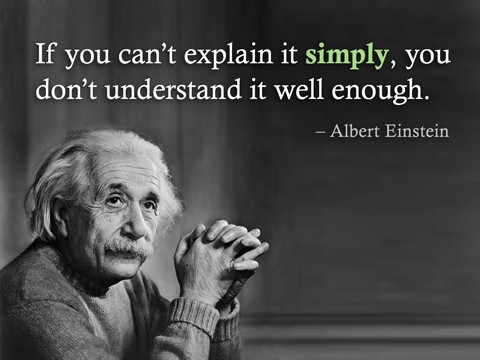 When everything else falls away, what sticks with you? Succes? No, it is not a basic spelling mistake, (although I have had a few of those in recent posts) but the sticky, Chip and Dan Heath, mnemonic that outlines how ideas (or good lessons) become memorable. Sticky lessons are: Simple, Unexpected, Concrete, Credible, Emotional, and told with a good Story. Made to Stick is definitely a decent read / listen and worth your time. If you do not have the time, here is my summary.
When everything else falls away, what sticks with you? Succes? No, it is not a basic spelling mistake, (although I have had a few of those in recent posts) but the sticky, Chip and Dan Heath, mnemonic that outlines how ideas (or good lessons) become memorable. Sticky lessons are: Simple, Unexpected, Concrete, Credible, Emotional, and told with a good Story. Made to Stick is definitely a decent read / listen and worth your time. If you do not have the time, here is my summary.
Simplicity – Simple doesn’t mean dumbed down.
What we mean by “simple” is finding the core of the idea.
“The more we reduce the amount of information in an idea, the stickier it will be.”
By ‘simple’ Chip and Dan mean – find the core of the idea. Stripping back the concept to its most simple premise (the key learning aim, outcome or objective). Prioritise and exclude all the noise and present it in plain English. ‘Tell it to a five year old’ springs to mind.
Unexpectedness
Routines to set the learning environment and learning expectations. Once set, the most basic way to get someone’s attention is this: Break a pattern. Humans adapt incredibly quickly to consistent patterns.
Generate interest and curiosity with unexpected information, the equivalent to the misplaced slide in a Powerpoint presentation. I observed a medical history lesson last week where the students were expected to solve an anatomical puzzle whilst being sprayed with fake carbolic acid, well water. It broke the expected pattern of learning, it was somehow permitted micheviousness and it made the lesson memorable. Second, exploit the gaps in their learning rather than heaping more content.
There is value in sequencing information – not dumping a stack of information on someone at once but dropping a clue, then another clue, then another clue, then another. This method of communication resembles flirting more than lecturing.
How about create a mystery for students to solve, doesn’t that sound more exciting than ‘today we are going to learn about…’
Concreteness – Clear and robust
Abstraction makes it harder to understand an idea and to remember it. It also makes it harder to coordinate our activities with others, who may interpret the abstraction in very different ways. Concreteness helps us avoid these problems.
I really loved the idea of the metaphor of ‘learning as velcro.’ Students are the hooks and we, the teachers, need as many loops in our lessons to hook them with. This means we need to explain or paint ideas in terms of human actions and sensory information (hence the impact of the carbolic acid lesson), provide models, offer examples, and use figurative language, link to existing know and most of all, make connections. That is one reason, Chip and Dan suggest, mind maps work well in kickstarting novice learners. Hard to disagree really.
Credibility – We believe in you
First step. Our students must believe that what they’re learning is important. That is why CIEAG is so important IMHO. Can we help students see parallels between their own lives and what they’re learning. Can we provide situations where concepts, skills, and strategies prove their usefulness. It is one of the few areas where I feel Functional Skills had some value. My new office-mate Jon had his students tiling the main atrium with napkins. It was organised chaos however when they returned to the classroom they “really got it, they understood square numbers.” They also understood factors, unravelling a napkin provided a 2 x 2 square. I not suggesting they could tile, but they could purchase the right amount of tiles for the job.
Emotion – “Why Should I Even Care?” Good Point.
We appeal to their self-interest, but we also appeal to their identities-not only to the people they are right now but also to the people they would like to be.
Help students understand “what’s in it for them.” The books suggests we tap into existing emotions and attitudes; appeal to their identities. Not an easy gig, though thought provoking, especially when considering how we might approach spiritual, moral, and social development.
Stories. Once Upon a Time…
Stories are like flight simulators for the brain.
A story can provide the context, missing from abstract prose. A story can be subtly contextualised and framed for the specific groups, or even groups within groups. Stories are almost always concrete, most have emotinal and unexpected elements. In fact the Heath brothers would suggest that ‘story telling’ might be the most powerful of all the methods suggested. They suggest you use one of the three basic plots: the challenge plot, the connection plot, and the creativity plot.
More stickiness
For more stickiness visit the main teacing blog at Teaching that Sticks.
And that’s the great thing about the world of ideas- any of us with the right insight and the right message, can make an idea stick.
[qr_code_display]


